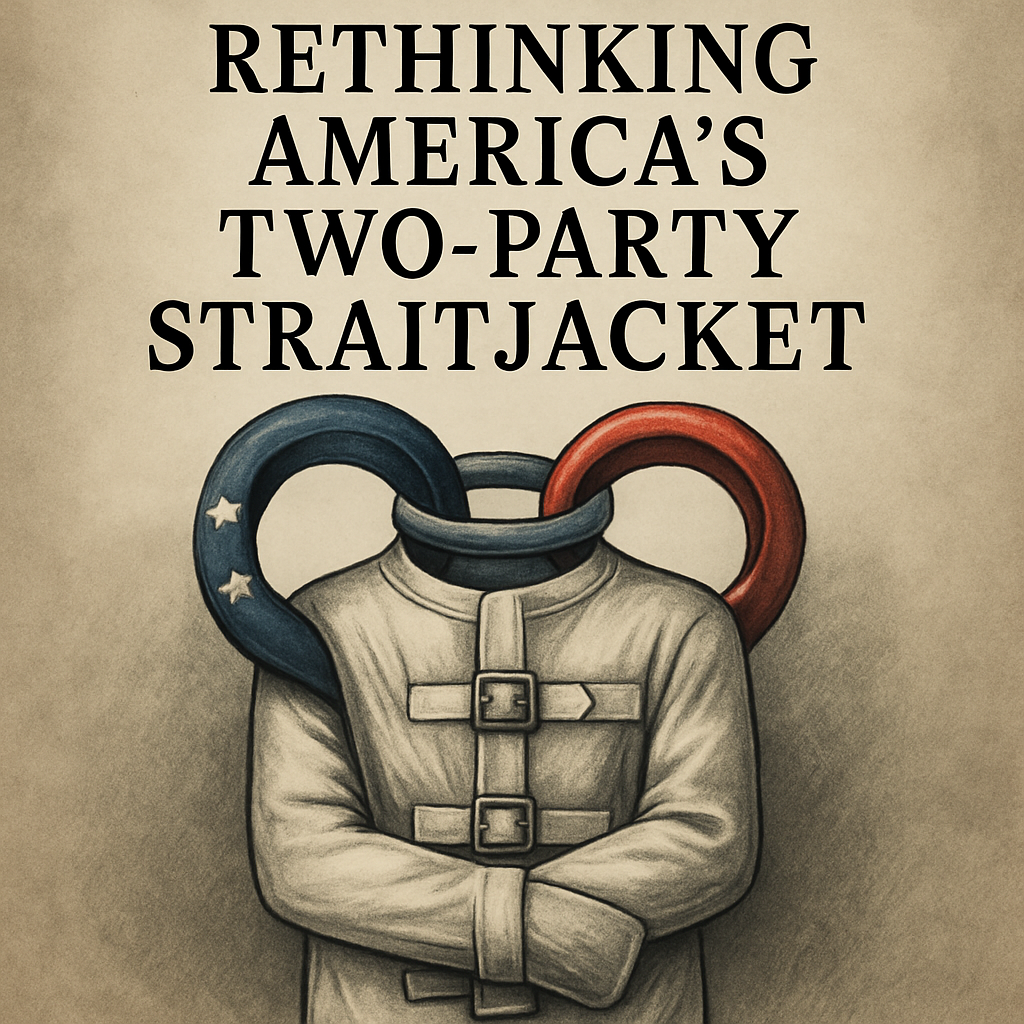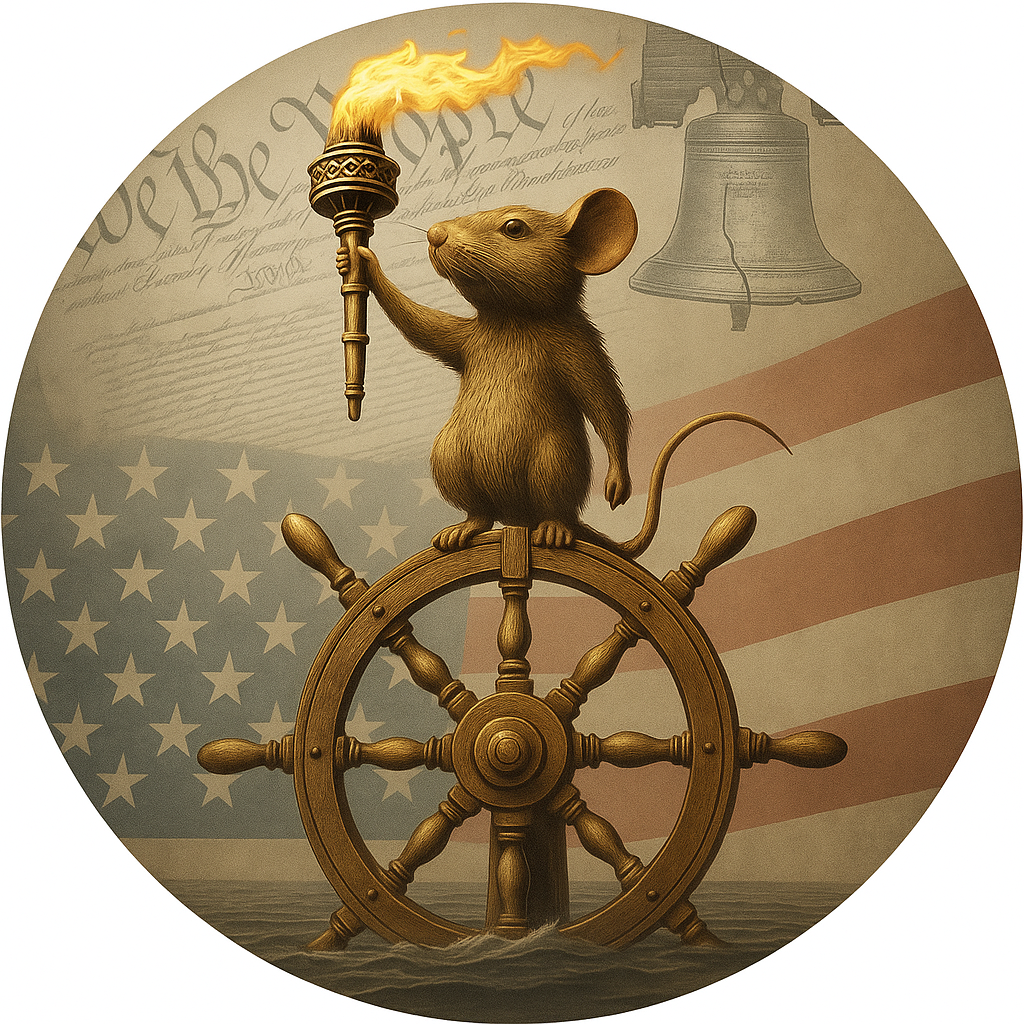
Rethinking America’s Two-Party Straitjacket
For as long as most of us have been alive, America has operated under the same familiar framework: two dominant political parties, locked in permanent warfare, endlessly swapping control of the levers of power. Every four years we are told that this election is the most important of our lifetime. Every four years, half the country ends up furious, convinced the other half has lost its mind. Policies swing back and forth like a wrecking ball. Trust in government craters a little more. The bitterness hardens. And then the cycle starts again.
We grumble about it. We complain about how toxic politics has become. We shake our heads at the dysfunction. But when the next election comes, we return to the same binary choice as if there were no other option: Republican or Democrat. Chocolate or vanilla. Left or right. And somehow, even though millions of Americans openly admit that they hate this— that they are tired of being trapped between two extremes — we act like change is impossible. Like we are prisoners of a structure we all recognize is broken but are too exhausted or too skeptical to challenge.
The truth is simpler and sadder than we usually admit: the two-party structure has trained us to expect disappointment. It has trained us to think in survival mode, not imagination. It’s not even about candidates anymore. It’s about fear—fear that if “our side” loses, the other side will destroy everything we care about. When you live in that kind of fear, you stop asking for something better. You settle. You pick the least bad option. You vote not for a vision of the future, but against the nightmare you’ve been told is lurking if the “others” win.
Both parties benefit from this. The two-party structure thrives on fear because fear keeps you loyal. Fear keeps you angry enough to vote, but too scared to demand real alternatives. And over time, it becomes so ingrained that the idea of a real third political force feels like science fiction. Even when people agree — across all ideologies — that the two-party stranglehold is making America weaker, less stable, less free, they still shrug and say, “Yeah, but it’ll never change.”
But why? Why are we so certain that offering a different political alternative is impossible? Why, in a country that prides itself on innovation and entrepreneurship, do we accept total stagnation when it comes to the way we govern ourselves? If the two-party structure leaves half the country furious after every election, and if it leaves most Americans feeling disconnected from their supposed representatives, why isn’t the obvious conclusion that it’s the structure itself that needs fixing — not just the faces in the seats?
Adding a serious third political force isn’t radical. It’s basic logic. It’s not a revolution. It’s an evolution. It’s not throwing out chocolate and vanilla — it’s adding strawberry to the cooler. It’s giving Americans something they haven’t had in generations: a meaningful choice. And if someone still wants chocolate or vanilla, great. But isn’t it past time we had more than two flavors in a nation this large, this diverse, and this ambitious?
It’s worth remembering that the Founding Fathers didn’t design a two-party system. In fact, George Washington specifically warned against the dangers of political factions dominating the country. But tribalism is a powerful human instinct, and the two-party structure locked in quickly. It was convenient. It simplified choices. It created ready-made teams for people to belong to. And over time, it became sacred—not because it worked well, but because it was familiar.
We are now living with the consequences. Permanent instability. Wild policy swings. A government too paralyzed by hatred and revenge cycles to do anything except campaign for the next election. Trust in our institutions has collapsed. Internationally, America is no longer seen as a stable partner, but as a country that veers wildly depending on which team won the latest domestic shouting match. We cannot rebuild credibility, strength, or prosperity if we cannot even guarantee continuity of purpose beyond a single administration.
But the damage runs even deeper than policy or reputation. It has eroded something more fundamental: how we see each other. In today’s America, we mock each other’s pain after natural disasters. We shrug off human suffering based on voting maps. We justify cruelty by convincing ourselves that people “deserve” hardship because of how their state leaned politically. This isn’t normal. This isn’t strength. It’s the slow unraveling of a common national identity, replaced by isolated echo chambers, each one convinced that only their side tells the truth and that the other is beyond redemption.
Most Americans live inside political bubbles now, often without realizing it. They watch the same news sources. They hear the same narratives from their friends and neighbors. And when everything you consume tells you the other side lies about everything, loyalty becomes survival, and empathy becomes weakness. In a country this propagandized, you cannot simply blame individuals for losing their ability to trust or question. The structure itself — the relentless two-party machinery — conditions people to defend their side at all costs, even when it means turning on their own countrymen in moments when compassion should be instinctive.
A third political force wouldn’t fix everything overnight. But it would break the false binary that is choking our democracy. It would force negotiation instead of war. It would make it harder for any one faction to impose extreme policies unchecked. It would stabilize the system—not by favoring one ideology, but by forcing all sides to return to the table and compromise. It would shift the incentives back toward governance, and away from permanent campaigning fueled by fear.
The truth is, most Americans already want this. They already know deep down that two options aren’t enough. They just don’t believe they’re allowed to expect more. Years of disappointment have trained us to lower our standards. But the reality is simpler: nothing about the two-party structure is inevitable. It exists because we let it. And it can change if we decide we are no longer willing to settle for a rigged game.
We are not trapped unless we choose to be. We are not powerless unless we decide we are. If you feel frustrated, exhausted, disillusioned — you’re not alone. You’re not crazy. You’re seeing the cracks in a machine that was never designed to serve us as citizens, only to preserve itself as a structure. The question isn’t whether the two-party political structure is broken. We already know it is.
The only real question left is: why are we still settling for it?
Learn more at TheRoundtableRevolution.org
